Howdy
So a couple of weeks ago I picked up my first #1, First Issue. I already had a 2nd and 3rd Issue, but did not yet have a First Issue. It turns out this one is a #1, First Issue, 5th Type. The Serial Number is 48XX.
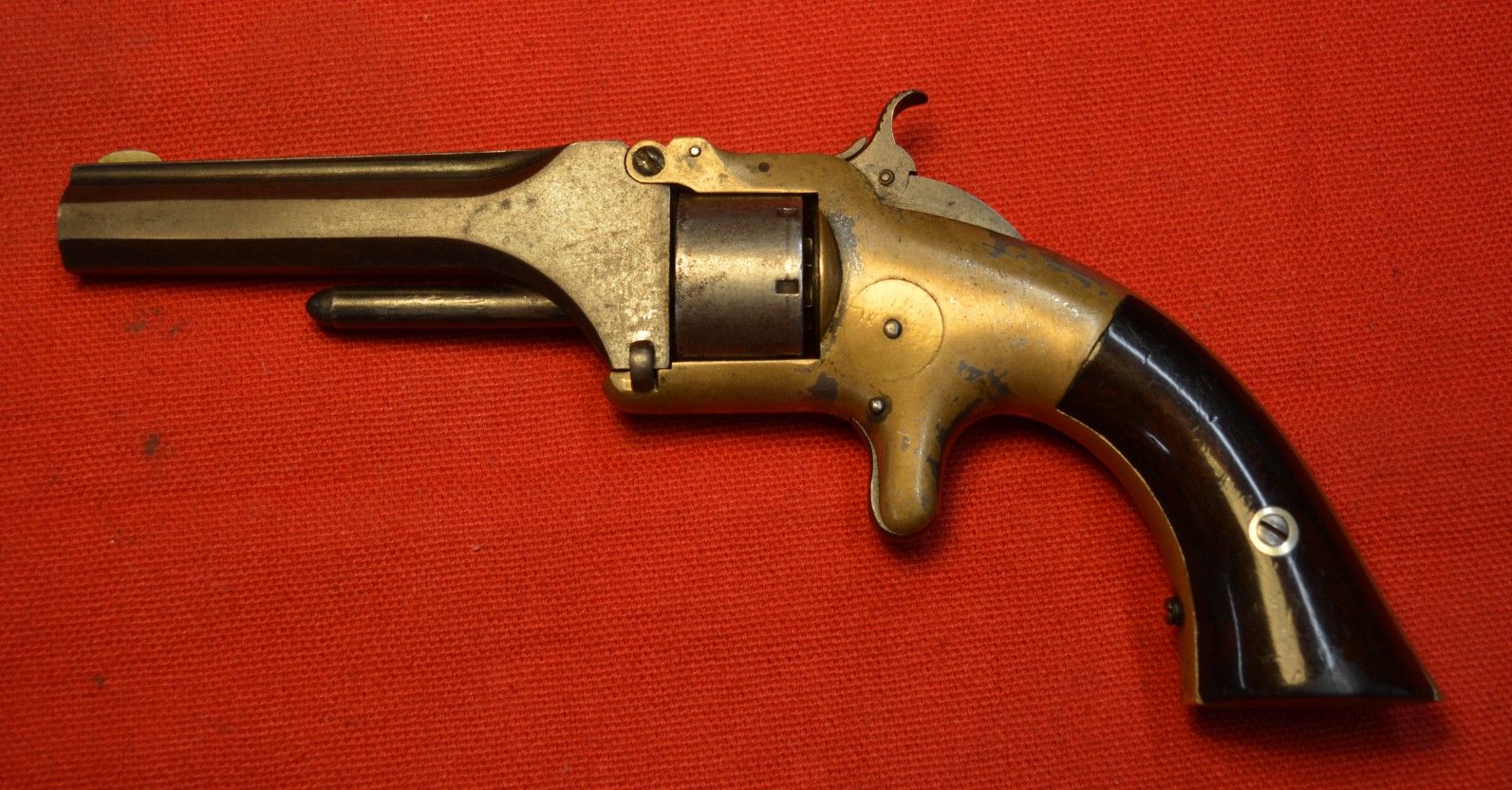

Nothing really exciting, the silver plating is almost all gone, and the lockup is a bit loose, but a nice enough example. But now I have been reading in both Neal & Jinks and SCSW about all the different types of First Issues that were made. Who knew?
Being reasonably familiar with the 2nd and 3rd issues, as well as the #1 1/2 and #2, I was surprised to see the mechanism of this #1 First Issue was a bit different from them.
Never having closely examined a First Issue before, I was surprised to see the arrangement for rotating the cylinder. There is a dowel in the rotating recoil plate which engages a hole on the rear of the cylinder. Not as convenient for a quick reload as the more conventional ratchet teeth on the rear of the cylinder being engaged by the hand. It takes a bit of careful lineup to put the cylinder back in this little revolver correctly.
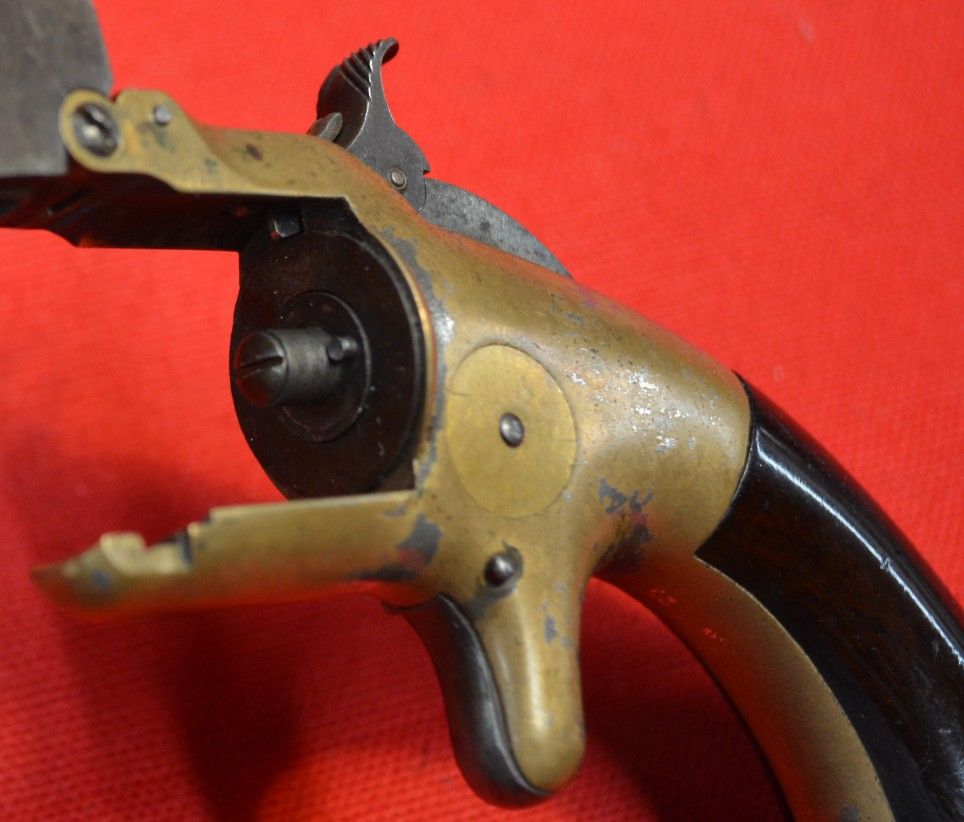
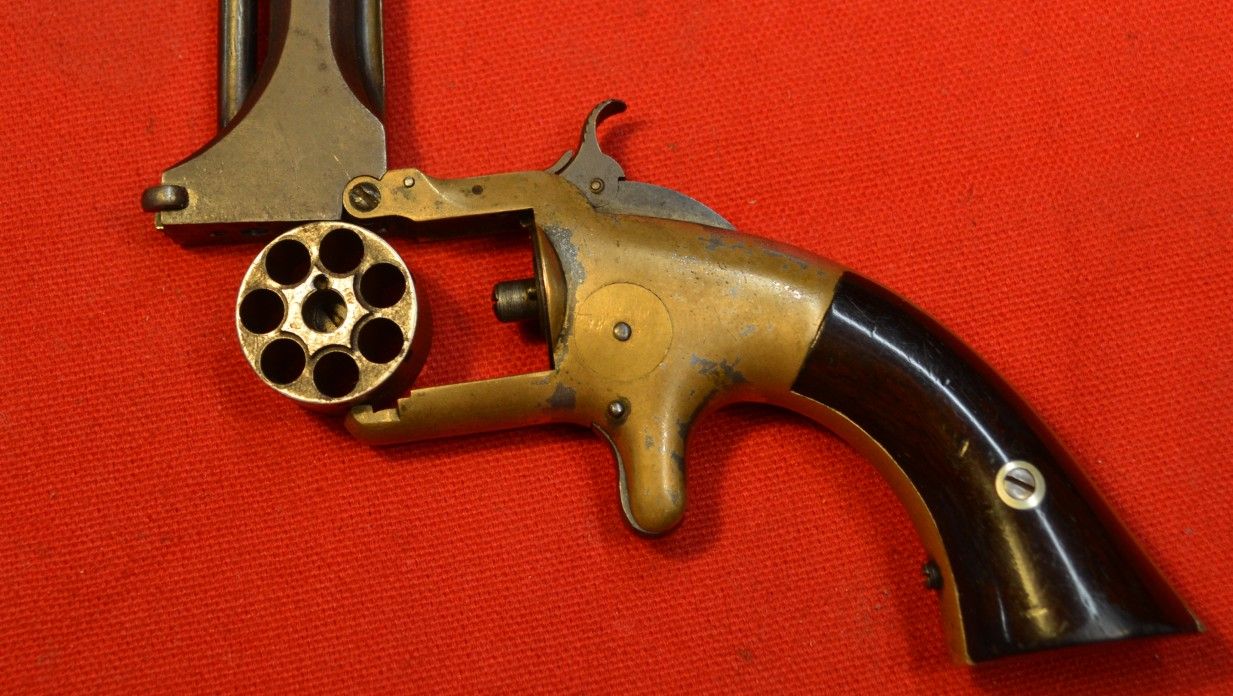
But here is where it gets interesting. Rather than the split spring under the bolt, actuated by the wedge shaped nub on the top of the hammer of the later models, the top of the hammer on this revolver pivots slightly. This photo shows the hammer the way it sits when the hammer is cocked. When cocking the hammer, the thumb rotates the upper part of the hammer up slightly, pushing the bolt up and freeing the cylinder to rotate. When the hammer falls, the upper part rotates down, passing by the bolt, allowing it to remain engaged in the cylinder.

So here are the questions: The upper part of the hammer on this little revolver has no spring. When the hammer is cocked, the upper part is free to flop up or down. Is this the way they were designed? Without anything to keep the upper part of the hammer in one position? Or is there perhaps a spring missing someplace?
Second question: There is a D and two circular marks stamped onto the grip frame. There are two matching circular marks stamped onto the right side of the hammer. Is there any significance to these marks?
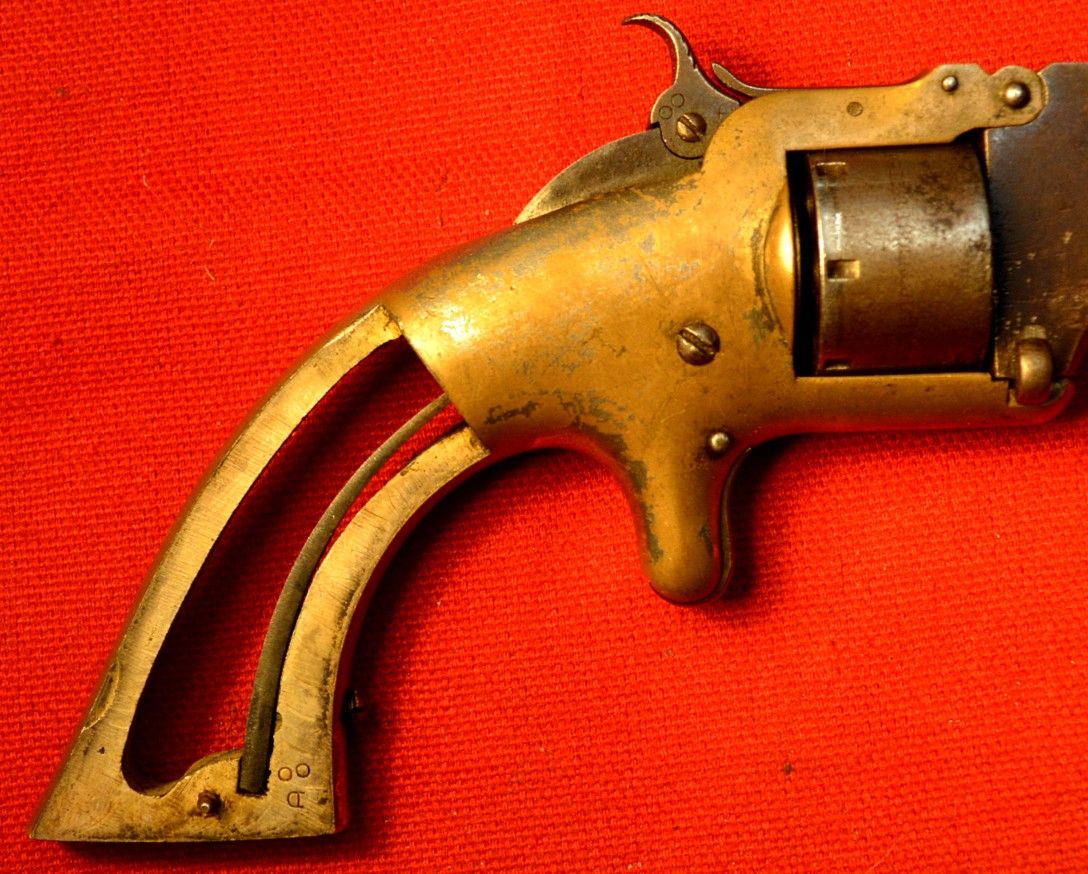
Just to make things interesting the same day I found the S&W Tip Up, I found a Manhattan Tip Up too. I have not yet had a chance to ask Roy when the little #1 shipped, I have read that the Manhattan was probably made around 1861-1862.
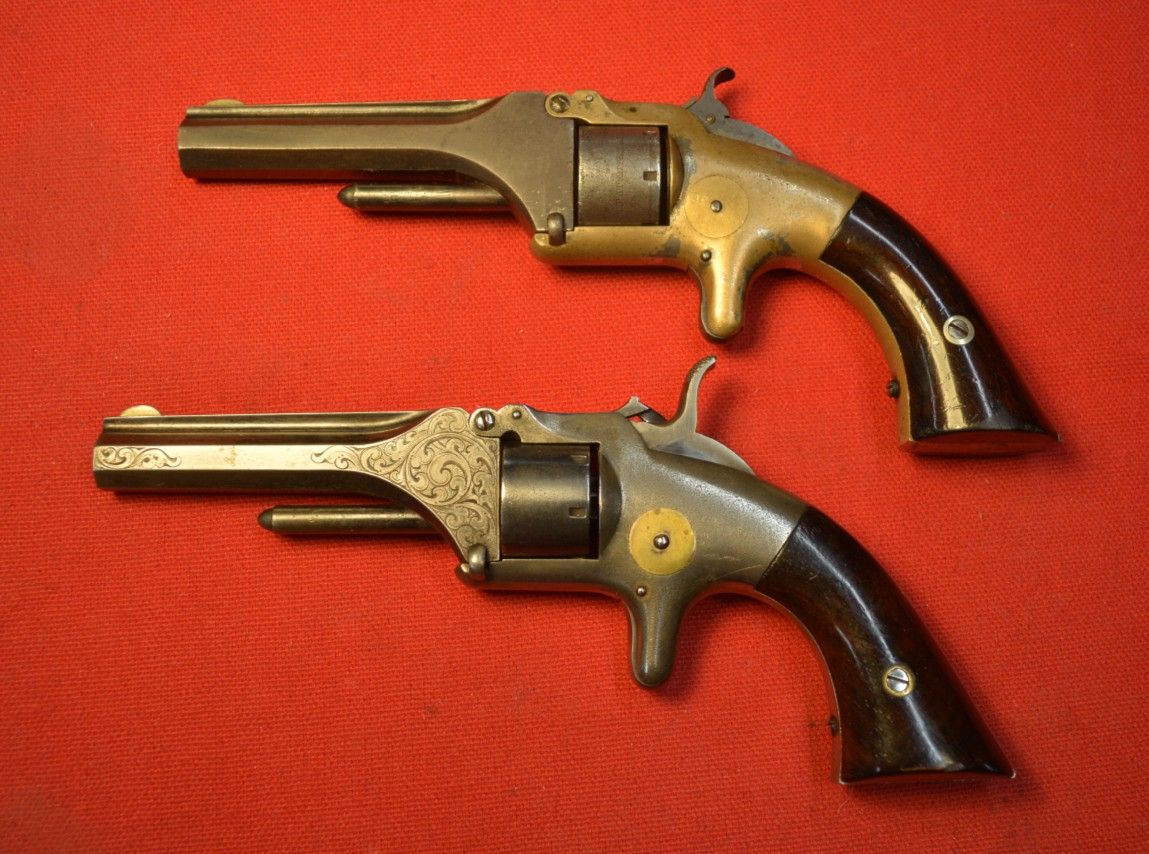
The mechanism of the Manhattan for operating the bolt is similar to the split spring arrangement of a S&W Tip Up, but it is a bit different.
There is a spring protruding from the top of the hammer. There is a finger on the right side of the bolt that extends out farther than the rest of the bolt. The top of the spring is rounded. When the hammer is cocked, the spring engages the bolt and raises the tip to free the cylinder to rotate. When the hammer falls, the finger on the bolt pushes the spring to one side, allowing the bolt to remain engaged in the cylinder.

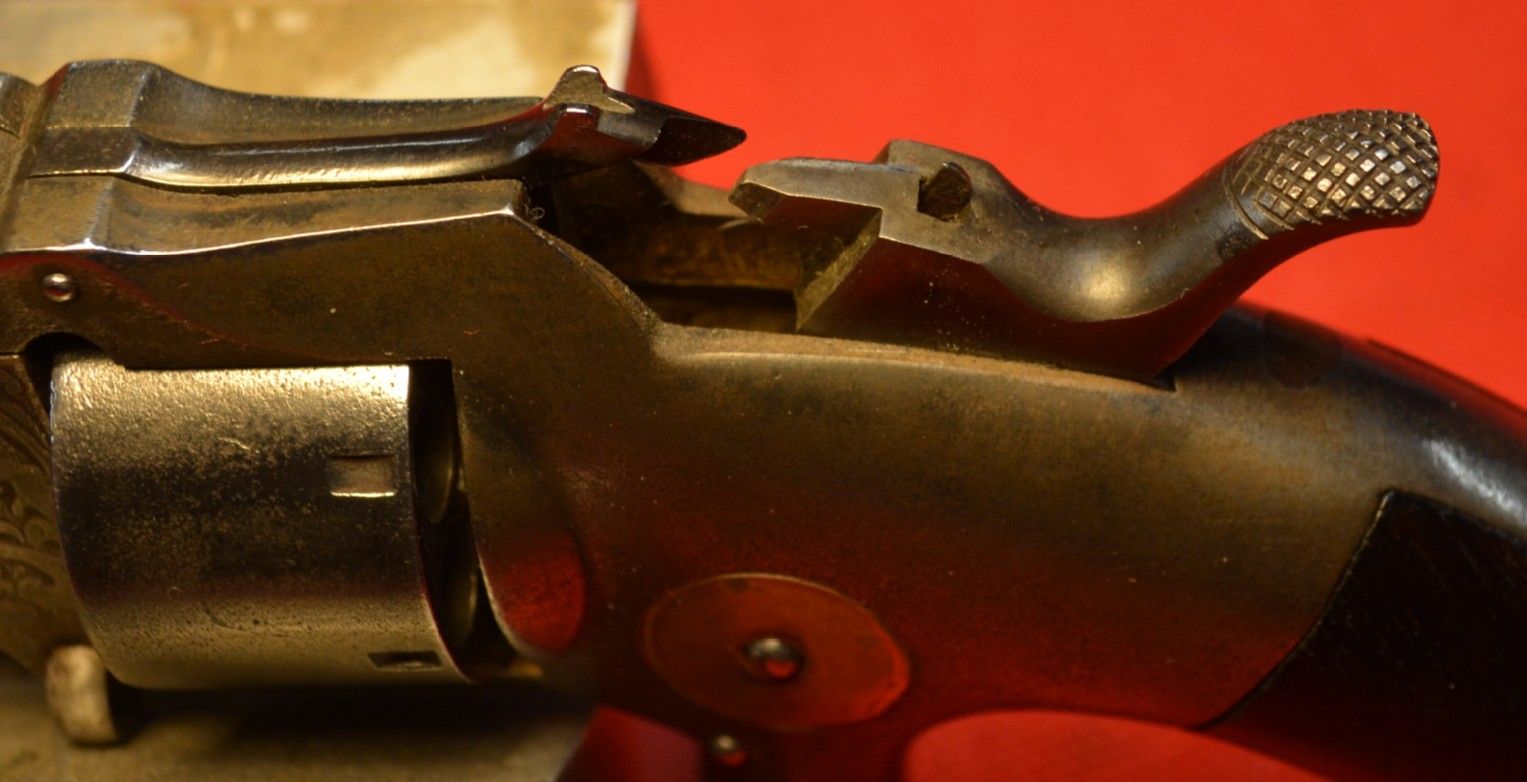
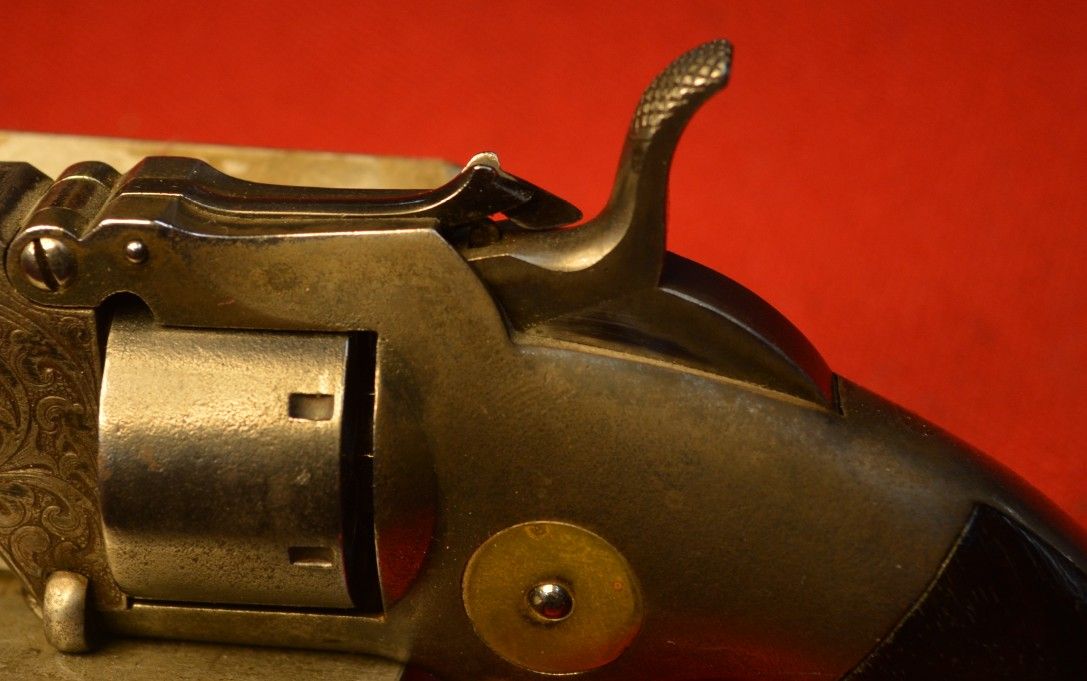
I have read this may have been a way for Manhattan to get around patent issues with S&W. I have a book on the way that is supposed to answer some of those questions. Anyway, the little Manhattan is just as interesting as the little Smith. I really like the engraving on the barrel of the Manhattan.
Unfortunately, now it appears there are more types of Tip Ups than I was aware of, and I may have to be on the lookout for some of them.
If anybody can answer my questions about the #1 First Issue, I would be much obliged.
P.S. I pulled the bullet out of a couple of 22 Shorts and dumped out the powder. Both little Tip Ups fired the 'blank'. That is probably all the shooting I will do with them.